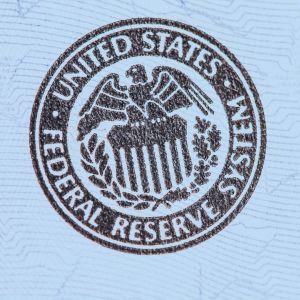Fed ends crypto-focused supervision, returns oversight to standard processes
3 min read
The Federal Reserve has shut down the program it built to keep banks on a leash when they got involved with crypto. The decision was announced on Friday, with the central bank saying it’s putting an end to its Novel Activities Supervision Program , the one it used to keep a tighter grip on banks getting into crypto assets, blockchain experiments, and tech-heavy partnerships. This change was confirmed in an official notice published by the Federal Reserve Board, according to a release posted on its website. The program has only been around since 2023, built to help the Fed track what it called “novel activities” inside the banks it supervises. That covered crypto custody, crypto-backed lending, blockchain-based services like tokenized dollars, and working with nonbanks using tech like APIs to deliver banking services. But now the Fed says it has “strengthened its understanding” of all that and doesn’t need a separate framework anymore. The program’s official guidelines, laid out in a letter last year, have also been scrapped. Fed eases up on crypto scrutiny The now-defunct Novel Activities Supervision Program was first created to boost how the Federal Reserve oversaw risky experiments banks were getting into, especially the ones involving crypto and digital ledgers. It targeted banks that were trying to do business with crypto firms, issue stablecoins, or build systems using distributed ledger technology. Any setup where banks plugged in nonbank partners to deliver financial services using tools like APIs was also flagged. The Fed didn’t issue new laws. The program wasn’t about banning activity—it was about putting more eyeballs on it. If a bank were exploring tokenization of assets, dollar tokens, or holding customer crypto, the Fed wanted to know. If it were offering deposits, payments, or loans mainly to crypto companies, it would be watched more closely. The Fed’s letter explained that the program’s scope was “risk-focused” and meant to “complement existing supervisory processes.” That same letter has now been withdrawn. Inside that 2023 letter, the Federal Reserve said innovation could help the economy and extend financial services to people left out by traditional banking. But it also warned that these changes could cause “rapid shifts” inside the system and bring up legal gray zones or risks that weren’t covered by old rules. The program, it said, would help the Fed catch up with the pace of change. Apparently, one year was enough. Crypto activities now go back under normal bank supervision Under the program, banks doing business in this industry just weren’t being ignored. The Fed tracked everything from crypto trading facilitation to stablecoin distribution. Banks with strong ties to crypto and fintech firms were automatically put on a closer watch. Some of those fintech arrangements let the tech company run most of the front-end operations while the bank provided backend access to infrastructure through APIs. That model became popular, especially among banks looking to serve crypto-native clients. The Fed also paid attention to banks diving into distributed ledger technology, especially when those projects had a shot at affecting the broader financial system. They watched anything involving tokenization of securities, experiments with digital dollars, or other blockchain-based banking tools. These projects didn’t need permission, but they did get special attention. That’s over now. The move doesn’t mean the Fed is now pro-crypto though. It just means they’re done treating it like it needs its own playbook. A line in the update reads: “The Board is integrating that knowledge and the supervision of those activities back into the standard supervisory process.” That’s a quiet way of saying they’re folding the crypto stuff back into regular oversight. But the eyes are still there. They’re just not wearing a special badge anymore. The smartest crypto minds already read our newsletter. Want in? Join them .

Source: Cryptopolitan



